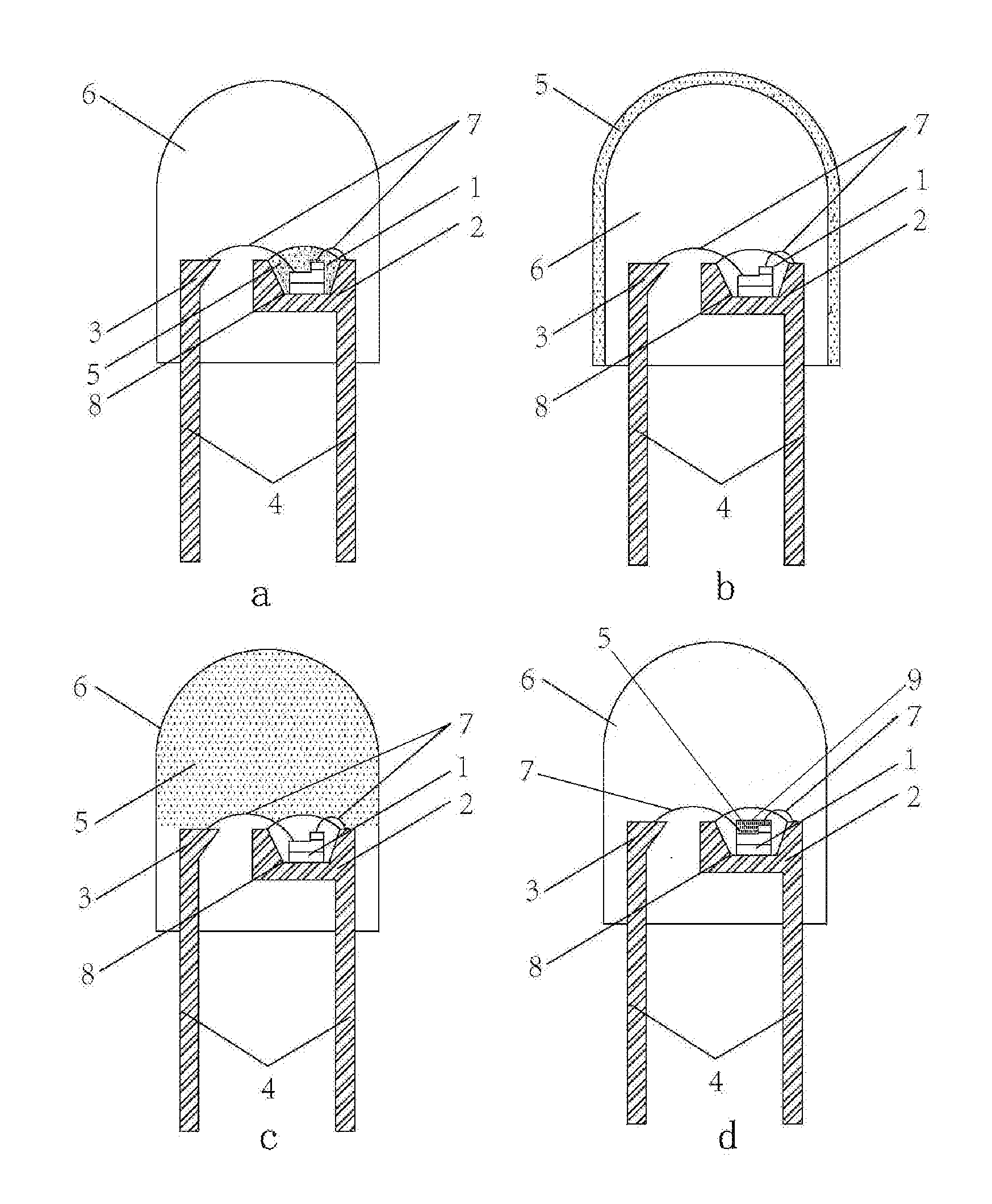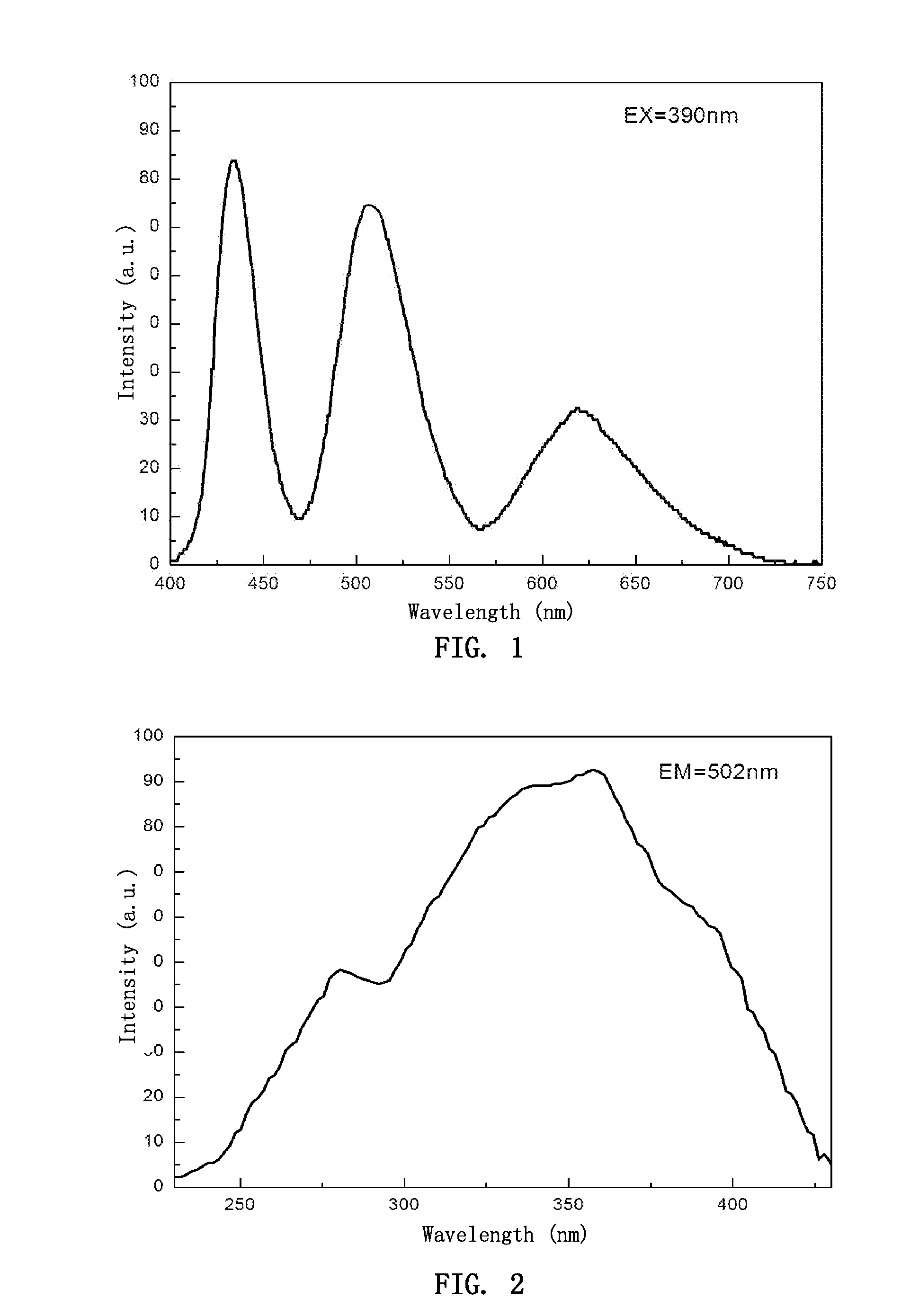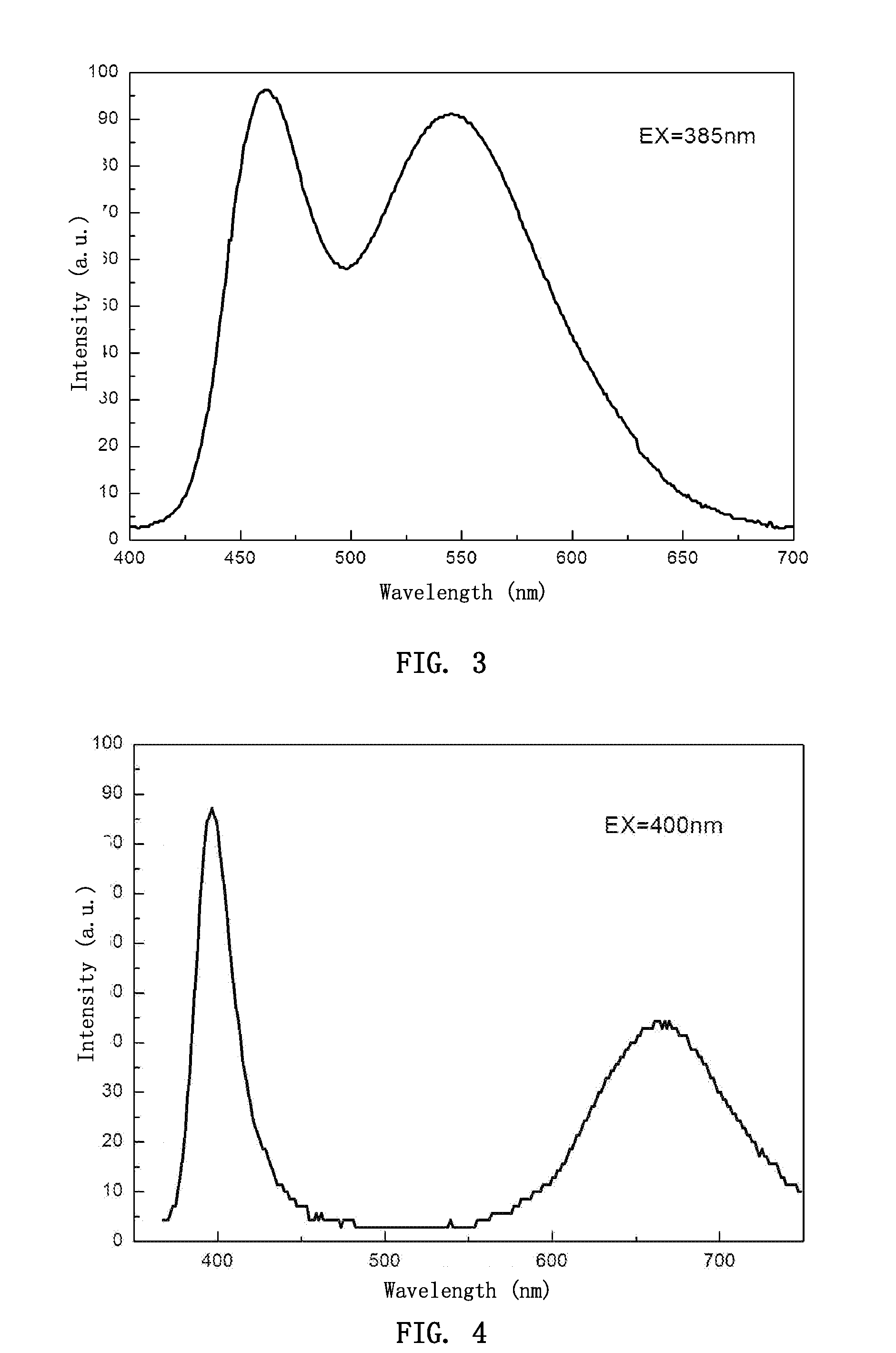Silicate base luminescent materials having multiple emission peaks, processes for preparing the same and light emitting devices using the same
a luminescent material and silicate base technology, applied in the field of photoelectron and semiconductor lighting, can solve the problems of low color rendering index of white light led, large restriction of the application and performance of fluorescent materials used in this method, and affecting the performance of white light leds, etc., to achieve excellent ageing resistance and high light conversion efficiency
- Summary
- Abstract
- Description
- Claims
- Application Information
AI Technical Summary
Benefits of technology
Problems solved by technology
Method used
Image
Examples
example 1
[0049]
Raw materialsWeight (g)BaCO3586.10MgO41.11SiO2120.78Eu2O31.76Mn3O43.81NH4F0.19Li2CO30.18
[0050]The raw materials according to the above composition were sufficiently mixed by a ball mill and then placed in a crucible. After cooling, the mixture was sintered in a furnace, through which a mixed gas consisting of 95% nitrogen and 5% hydrogen was passed, at 1200° C. for 6 hours. After cooling, the resultant sintered body was crushed, milled with a ball mill, and then sieved through a 325 mesh sieve, to give a luminescent material of the invention having a chemical composition of 2.97BaO.1.02MgO.2.01SiO2:0.01 Eu2+.0.05 Mn2+.0.005F−.0.005 Li+. The material had an excitation spectrum in the range of from 240 to 450 nm, and an emission spectrum in the range of from 400 to 760 nm with three emission peaks, of which peak wavelengths were at 438 nm, 502 nm and 617 nm, respectively.
examples 2 to 36
[0051]Luminescent materials of Examples 2 to 36 were prepared following the procedure described in Example 1, with the kinds and amounts of the elements A and A′ in the substrate composition being changed according to desired positions of emission peaks. The sintering temperature varied in the range of from 1000 to 1300° C. depending on the volume of the furnace, the weight of the materials, and the kind and formulation of the materials. The reducing atmosphere was provided by hydrogen gas, ammonia gas, a mixture of nitrogen and hydrogen, or a particulate carbon. Luminescent materials having two emission peaks with the following chemical compositions were obtained:
example 2
2.03SrO.0.92MgO.1.0SiO2:0.03Eu2+.0.02F−.0.07Li+
PUM
| Property | Measurement | Unit |
|---|---|---|
| wavelength | aaaaa | aaaaa |
| temperature | aaaaa | aaaaa |
| wavelength range | aaaaa | aaaaa |
Abstract
Description
Claims
Application Information
 Login to View More
Login to View More - R&D
- Intellectual Property
- Life Sciences
- Materials
- Tech Scout
- Unparalleled Data Quality
- Higher Quality Content
- 60% Fewer Hallucinations
Browse by: Latest US Patents, China's latest patents, Technical Efficacy Thesaurus, Application Domain, Technology Topic, Popular Technical Reports.
© 2025 PatSnap. All rights reserved.Legal|Privacy policy|Modern Slavery Act Transparency Statement|Sitemap|About US| Contact US: help@patsnap.com



